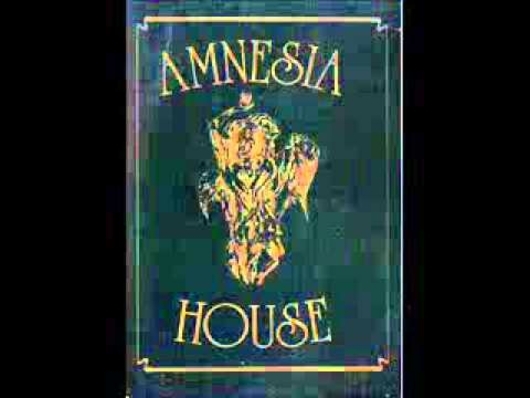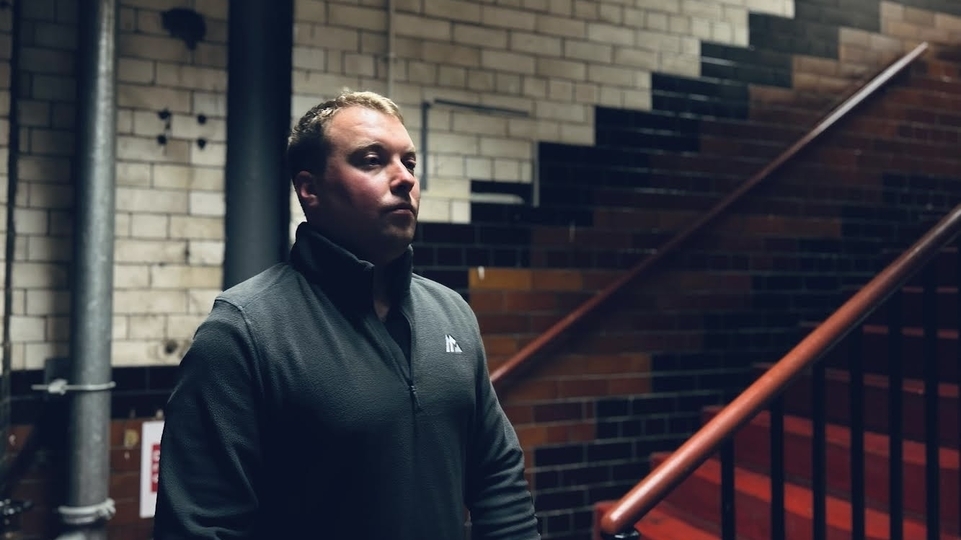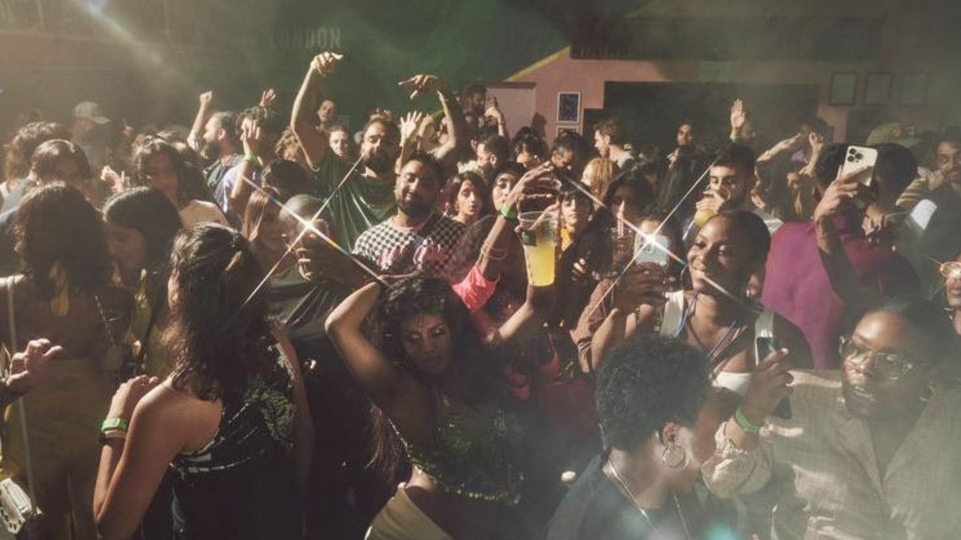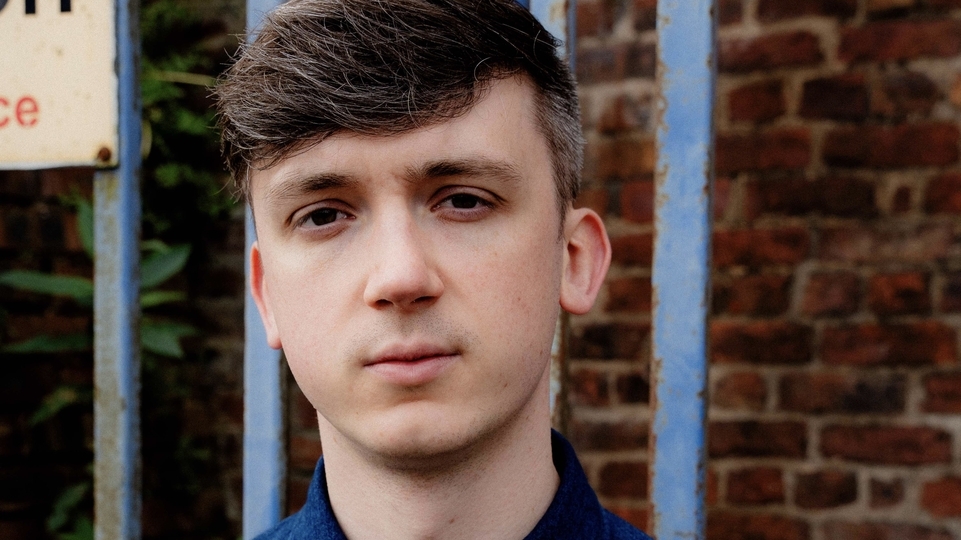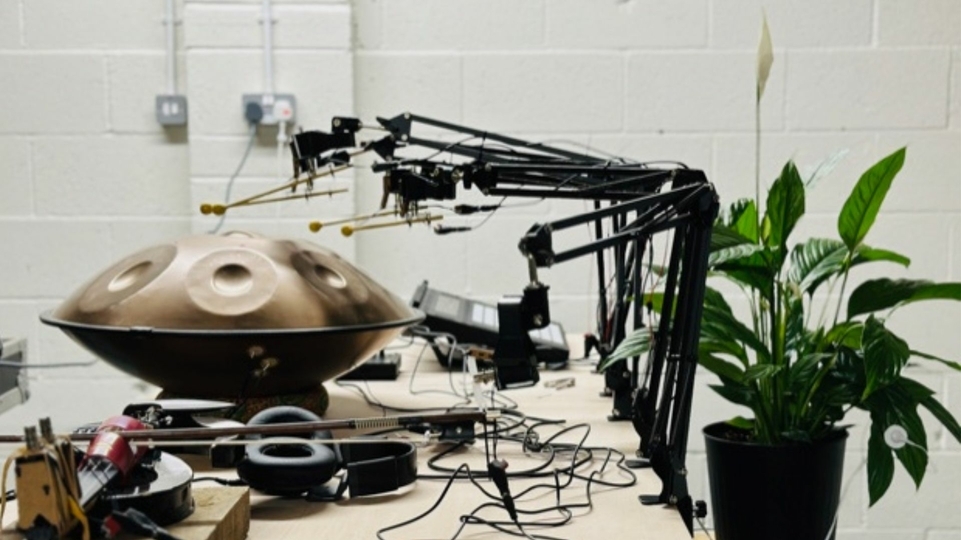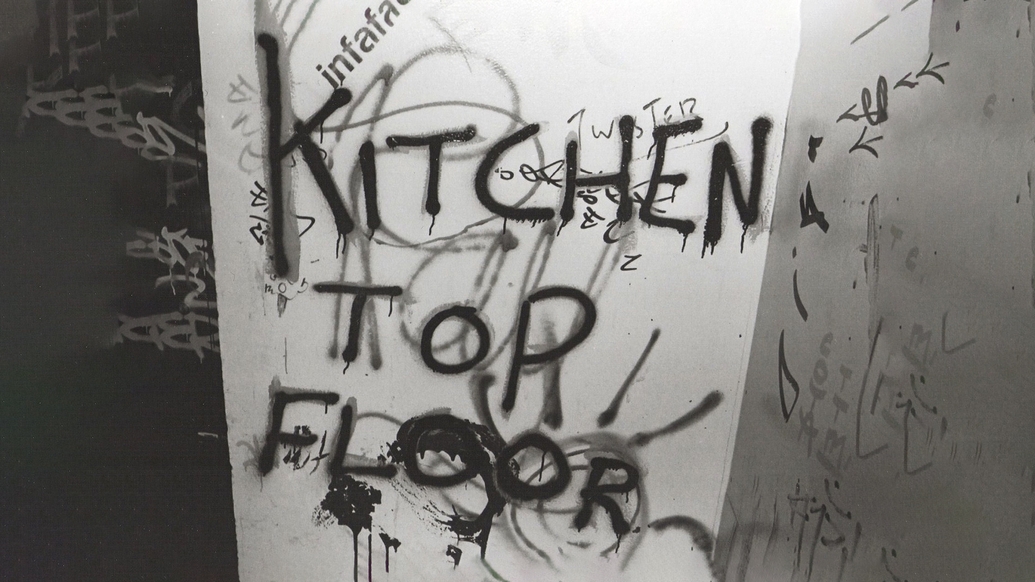
24-hour party people: raving and rebelling in Manchester’s Hulme Crescents
In the midst of the ruinous Thatcher era, Manchester’s Hulme Crescents estate became a haven for squatters, anarchists and acid house ravers, who converged in the hedonistic flat-turned-studio and after-hours club, The Kitchen. Kemi Alemoru speaks to former residents, DJs and familiar guests from the Madchester scene about the lasting impact this space had on the city’s cultural landscape
Welcome to Hulme Crescents, Manchester, an inner-city public housing experiment that, in the ’80s, became an amphitheatre of chaos and creativity. In this estate, acid house ravers, New Age travellers, punks, b-boys and Rastafarians converged, striding up dark stairwells, through a maze of graffiti-covered walkways, toward the thumping bass emanating from The Kitchen, a 24-hour shrine to music. “It was an all-night gaff,” remembers Happy Mondays’ Shaun Ryder, who first visited in 1986. “I wasn’t thinking, ‘This is DIY music culture’. It was a fucking mega gaff, somewhere where we were off our fucking faces until 7 in the morning when the cops showed up.”
Despite Ryder’s nonchalance, this historic development — the largest of its kind in Europe, where vast lawns were encircled by four run-down, half-moon-shaped buildings — and its round-the-clock parties are now being reappraised by those who remember living, dancing, and rebelling against the status quo there. Three decades since its demolition, they now believe it had a significant impact not just on their own lives, but on the cultural force of the city itself.
Al Baker, a photographer and former resident, remembers this grungy autonomous zone, where squatters, students and a star-studded cast of musicians would mingle, as representing a “new way to live”. Revellers were “dancing in the ruins” of society under Margaret Thatcher’s grim rule, he says, with the walls literally crumbling around them. Later this year, he will publish a new collection of photos from this era, giving an inside look at life in these four blocks — each named after a famous architect: Charles Barry, William Kent, John Nash, and Robert Adam.
Baker isn’t alone in his desire to share this lore. The Kitchen recently appeared in writer Ed Gillett’s encyclopaedia of British nightlife, Party Lines: Dance Music and the Making of Modern Britain. Photographer Richard Davis’ book, Hulme (Manchester), published in December, includes images that he captured while living there, developed in the darkroom he set up in his flat. These photos were recently exhibited in Manchester and Sheffield.
In January, Netflix released Daniel Kaluuya’s claustrophobic dystopian directorial debut, also called The Kitchen. The film has many parallels to Hulme’s anarchic community that feel impossible to ignore. Residents of the gloomy fictitious estate are constantly besieged, yet a thriving culture of resistance — plus a club where the defiant community lets off steam — thrives. These stories remind us that rhapsody can always be found in working class communities where people refuse to let adversity define them.
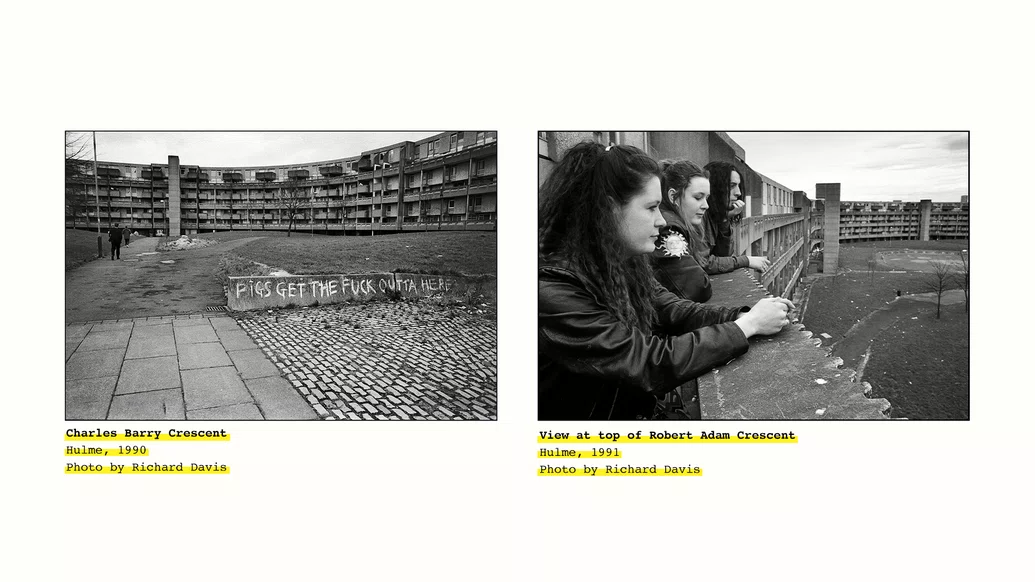
The real Kitchen’s story begins with Jamie Nicholson, a resident of the Charles Barry estate who, in 1986, noticed that the flat next to his had become unoccupied. He smashed through the dividing wall to create a large space that would soon make him an unsung hero of Manchester’s music scene. Al Baker remembers The Kitchen was first used as a recording studio. “Community Charge, Dub Sex, New Fast Automatic Daffodils, Ruthless Rap Assassins, Simply Red all recorded there,” he says. Later, they started having parties downstairs. “The Kitchen became an after-hours club.”
DJ and poet Chris Jam recalls the first time he went to The Kitchen in 1986. A curious London transplant finding his place in Manchester’s febrile musical landscape, he’d met fellow DJ Tomlin McKinley “around town” — in Black music clubs like The Gallery. Inspired by McKinley’s father, who had managed sound systems in Jamaica, they became heavily involved in the Black music scene, playing at blues parties and shebeens that were going on around Moss Side and in nearby Epping Walk. “One night someone told us about The Kitchen, so we walked down there to the Charles Barry estate... It was like a scene from a film — Mad Max. It blew my mind,” he remembers. “The travellers’ smoke, the wild dogs running around. You could hear music coming from everywhere.”
Walking past The Haçienda one night, he saw 400 to 500 people who couldn't get in, including some he knew from London. Realising The Kitchen was only 10 minutes away, he had an idea. “People were travelling all over the country, creating new communities,” he recalls. “We thought The Kitchen would be perfect to take some of the overspill.”
He and Tomlin made a deal with Nicholson and, as Jam MCs, became the resident DJs who defined the space, spinning everything from acid house and breakbeat to Ibiza-primed anthems, techno and beyond. They catered to an eclectic crowd: “Ravers, crusties, students, punks, artists, musicians, gangsters — you got the whole lot.” Some weekends would see 800 people pass in and out of The Kitchen’s metal front door. “I wore nice crisp shit. I'd leave there in a £180 jacket I could never wear again. Smeared in Day-Glo paint where I'd been up against the walls,” Baker adds. At its height, it was “crammed to the rafters” with revellers spilling out onto the balcony.
It was there that the Jam MCs met Shaun Ryder, and ended up getting invited on tour with Happy Mondays. Ryder, who in the present day is about to hit the road “before the Mondays go to bed for a while”, remembers how the band were just then taking off, having recently released their debut album, ‘Squirrel and G-Man Twenty Four Hour Party People Plastic Face Carnt Smile (White Out)’. “But when I was back in the city I’d end up there again. I actually got leathered,” he recounts. The Kitchen was level with the window of the pub where a disgruntled man lived and unsuccessfully attempted to sleep. “You could literally touch the pub when you were out on that balcony. We were taking the speakers up early doors one night, so him, his pals and his sons jumped us and kicked us to fuck.”
“Those flats were Glastonbury before the TV cameras came, but all the time,” remembers Richard Davis, who, unfortunately, didn’t take his camera into The Kitchen because he was afraid of it getting robbed. He describes the atmosphere as fevered. Chris Jam recalls the near non-stop nature of the space: “We would start on a Friday and pause Saturday afternoon just to clean the place because it was filthy, and then start again into Sunday. It seemed to rain constantly and I remember, after all the madness, watching Jamie Nicholson sit on the wet floor eating his breakfast.”
This “safe haven for acid house aficionados”, as Baker describes it, attracted well-known artists from Manchester and around the globe. A Guardian article alleges Simply Red’s Mick Hucknall used to live in the block and sleep with an axe beneath his pillow due to the crime. When approached by DJ Mag, he declined to comment. “You’d see Haçienda resident DJs there, various members of 808 State, Happy Mondays, Stone Roses [Ian Brown lived in Charles Barry], grooving in the gloom along with everyone else,” remembers Baker. “There was no VIP attitude around then.”
Devious Devon, Derek C, and Gordon West did soul nights at The Kitchen, and even DJs like Frankie Knuckles and David Morales hopped on the decks when visiting Manchester. Chris Jam fondly remembers Run DMC and Public Enemy coming back after one of their gigs in town, hopping on the mic, and watching the sun rise over the Crescents, which had a magnificent view of the entire city.

Built in 1972, Hulme Crescents was supposed to be a community success story. After the war, many of Manchester’s old Victorian terraces had been labelled as slums and demolished. Rather than opt for high-rise replacements — sensing that families believed tall blocks fractured camaraderie — the architects decided to move ahead with a quirky low-rise design, joined together by decks. They dreamed of replicating something like the Royal Crescent in Bath, a Georgian architectural feat. What they actually created were dangerous wonky replicas with fundamental design flaws and asbestos.
Baker, who photographed “the bullrings” as they were dubbed locally, says the prefabricated concrete structures were “an architectural Brutalist nightmare”. “When I arrived at MMU [Manchester Metropolitan University] in 1995 to study photography, the head of the course pointed out of the window at Hulme and warned us never to set foot there,” he remembers. “He said, ‘It is not a safe place. They’ll take the shoes from your feet’. I raised my hand and asked, ‘What if you live there already?’ to stunned and embarrassed silence. They didn’t expect anyone from Hulme to be in the room.”
In 1975 the council banned families from living in the blocks after a child fell to their death from one of the decks. Instead of radiators, architects opted for underfloor heating, which in the ’80s cost about £40 a week to run. At the time, over 60% of the tenants were on benefits, with a fuel allowance capped at £10, so most went without. The damp attracted chronic cockroach infestations.
“There were no through-roads, which meant that emergency services found access difficult, leading to an enclosed fortress atmosphere,” Baker adds. “Flats burned out. Interconnecting walkways allowed crime to become rife: drugs, burglaries, muggings, rape and worse.”
By the late ’80s, it was essentially condemned, but the council couldn’t yet afford to tear it down. This anarchic era saw an influx of students, artists and squatters.

A disaster for local families was seen as an opportunity by young, bohemian former residents, who now see its legacy as something far more complex. Paul, a resident from 1986 to 1987, got his two-bed council flat in under two months because no one else wanted to live there. “It’d not be that [quick] now,” he says. The rent was about £20 a week and it had a “dystopian romance” to it. “The local club was cool and mostly a pretty safe place to go for a night out, even if some crazy nazi skinhead did threaten to shoot me one night.”
Danny ‘Moodymanc’ Ward started recording music in The Kitchen during his A-Levels, once he realised that no matter what time of day it was, someone was always playing or creating music in the area. Even though it “smelled of weed, poppers and dog shit,” he laughs, it was oddly motivating. “The tail end of the Thatcher era... There wasn’t a great deal of hope or expectation for young people at that time. But you could just sign on the dole and have enough money to live on. Now if you’re from a certain social background you barely have the option to be artistic.”
“I’d say 30% [of residents] were lost to drugs, but 70% wanted to take advantage of living in the inner city cheaply and have the time to get inspired,” says Davis. He’d been in a local pub one day when a man overheard he needed a place to live in Hulme and handed him the keys to his squat on one condition. “He wanted me to forward his old mail,” he says. “That was it.”
The Kitchen and the Crescents, to him, are examples of what happens when residents take control: they get creative. In his flat, he photographed comedian Steve Coogan and poet Lemn Sissay. Meanwhile, others were introduced to radical politics and created a housing co-operative, Homes for Change, which still exists and was instrumental in Hulme's redevelopment years later. “Don’t you think it’s dangerous for the establishment if young people are all in the same area together, living cheaply, doing their own thing, working on their creativity, and becoming politically aware?”
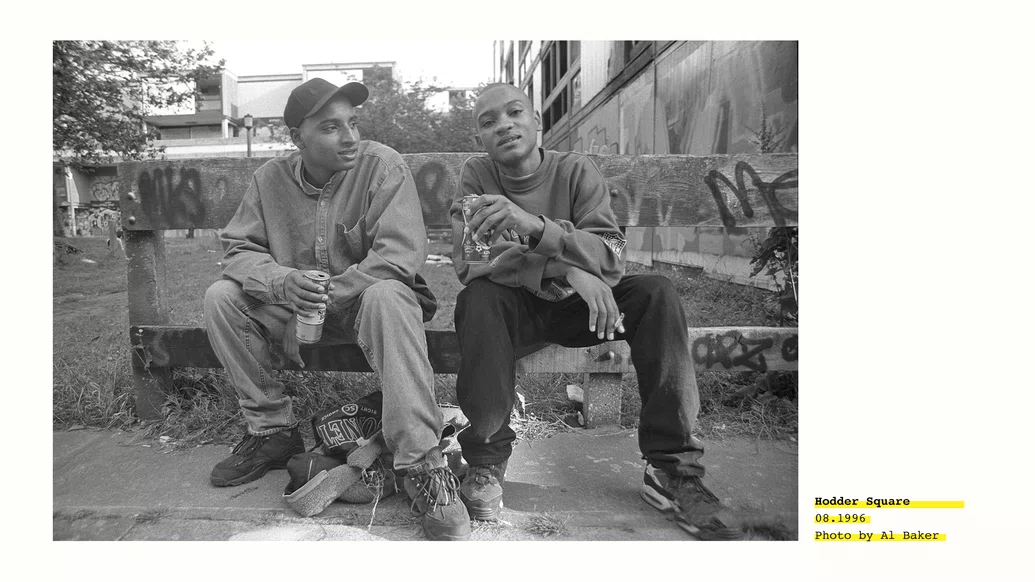
The cultural impact The Kitchen, and the Black youth who invigorated it, had on Manchester can’t be overstated, particularly considering that Factory started at the PSV/Caribbean club — a bus driver social that stood in the shadow of the Crescents. The Kitchen's soundscape represented the changing face of the city. In the ’70s and ’80s, Hulme was economically deprived but socially mixed, with recent migrants and their children living alongside the white working class. These teens and young adults were maturing and defining the lifestyle and tastes of multicultural Britain.
DIY spaces were crucial for Black musical styles like house to flourish since clubs in the city centre had always been hostile to Black and working-class teens, and when police first noticed ecstasy’s popularity, they were the first to be targeted. Chris Jam feels Hulme's innovative and mixed underground really gave the city its edge, especially as The Haçienda shut at 2AM.
“Tony Wilson was a maverick who had no problems with race, but every club has a door policy,” he says. “The Haçienda had the air of the preserve of white middle-class children. We took in people deemed unsuitable in that scene. That’s what happens. Something comes from the underground, but if it becomes mass culture, commercial companies try to codify and quantify it to sell it in mass units.”
Ward describes Jam MCs as his musical heroes. He notes that their sets, which drew on influences from around the city and were tailored to a mixed cultural crowd, changed the game. “Electric Chair, The Unabombers, Mr. Scruff — I don’t know if those DJs would play in that sort of way without the legacy of Chris and Tomlin,” he says.
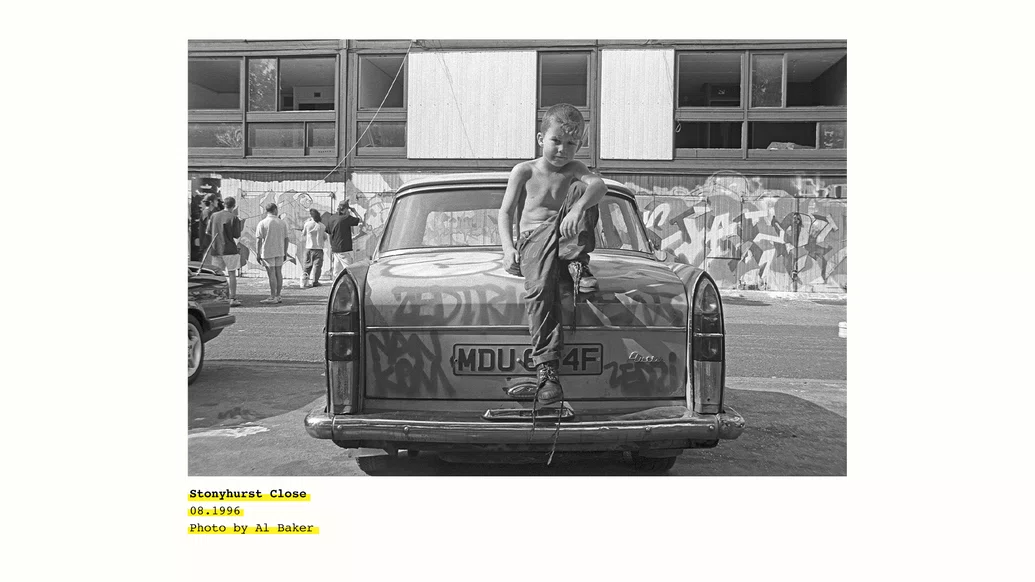
As the ‘90s drew closer, the atmosphere of The Kitchen and the Crescents at large shifted, partially due to their proximity to warring Moss Side gangs like Gooch and Doddington, who at one point in the late ’80s took all the studio’s equipment as a “tax”. “I was at one party where someone got thrown out of a window or off a balcony,” remembers Ward. “There was an edge; some people there were quite heavy.”
The rave scene’s ecstasy-fuelled “hugs and tunes” started to embolden organised crime in the city, and drew it to the enclosed estate too. Davis, who had left Birmingham for Manchester in ’88 because it was “noticeably violent”, becomes deflated when the conversation turns to this topic. “Manchester was such a mellow vibe — probably the ecstasy. It was fantastic,” he says. “In Autumn 1990 the gangs took over and it ruined everything. It went from Madchester to Gunchester quickly.” His brow furrows and his eyes are glassy as he remembers his last time in The Kitchen. Two rival gangs had a standoff at the flat. “It was terrifying. There were a lot of knives everywhere, a lot of panic,” he says, remembering how the music was still playing as the situation unfolded. His breath becomes more laboured. “The people inside couldn’t get out and the people outside couldn’t get in. It put me off going again.”
In 1994 the buildings were demolished, and Jamie Nicholson has rarely been seen since. The structural and societal issues that became synonymous with the development cast Hulme Crescents and The Kitchen into the footnotes of history as a crazy mistake. But two truths can exist at once. Art, music, creative relationships, friendships, and political groups were born in that concrete enclosure. The “undesirables”, as they were deemed by outsiders, found themselves at the epicentre of the city’s cultural rebirth, the significance of which is still felt profoundly to this day.
When asked to sum up the lost brutal world of Hulme Crescents, Baker is drawn to a Charles Dickens quote from 1859. “It was the best of times, it was the worst of times, it was the age of wisdom, it was the age of foolishness [...] it was the season of light, it was the season of darkness, it was the spring of hope, it was the winter of despair.
“A Tale Of Two Cities,” he says. “That was Hulme.”
